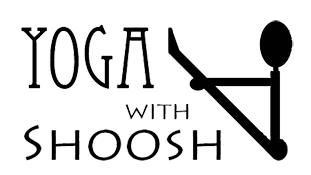The concept of core stability has always been important, but lately, it is very popular in most bodywork classes. Yet, the majority of students think that this concept relates to sit-ups and increasing the abdominal muscles. Building these muscles certainly is valuable, along with other trunk muscles, however, it is also important to acknowledge the purpose and value of the inner thigh muscles in relationship to core stability.
The inner thigh adductor muscles attach to the front of the pelvis at the pubic bone rim. Therefore, since they influence movement of the pelvis, they are important in helping to keep it stable. If one or more of the muscles is weak or too tight, then this could cause the pelvis to shift in a way that would make stability difficult.
 There are five inner thigh adductor muscles: pectineus, gracilis, and adductor brevis longus and magnus. (see graphic.) The gracilis is the longest of these five and it inserts at the top of the inside of the tibia of the lower leg. This means that it ends below the knee, which is what I want to focus on. This muscle not only helps to flex the hip joint, it also helps to flex the knee and when the knee is flexed, it also assists in rotating the leg medially (toward the center.)
There are five inner thigh adductor muscles: pectineus, gracilis, and adductor brevis longus and magnus. (see graphic.) The gracilis is the longest of these five and it inserts at the top of the inside of the tibia of the lower leg. This means that it ends below the knee, which is what I want to focus on. This muscle not only helps to flex the hip joint, it also helps to flex the knee and when the knee is flexed, it also assists in rotating the leg medially (toward the center.)
Holding one-legged standing poses could be difficult and possibly damaging if the gracilis is not functioning adequately. It could cause the knee to be out of alignment and this, in turn, will affect so much of your posture! Focusing on strengthening that inner gracilis muscle in these poses would therefore be very useful. You can feel this muscle and tell whether it is soft or strong. Start in a standing position and hold onto the wall or chair top with your right hand. Bend both knees slightly (only a few inches) and lift your left foot off the floor behind you, keeping the knees parallel. To start with, try balancing without holding on and moving the right leg at the knee up and down just a few inches. If your balance comes easily and there is no wiggle in the hip or knee, then you are most likely aligned and stable, and already using the gracilis. BUT, if you are shaky or had difficulty balancing in this movement, then the gracilis needs help! Still in the same standing position on the right leg, take your left hand and place it on your inner right thigh. Make sure your standing knee is directly above your foot, which for many of you means you need to rotate the knee a bit medially (inward). You will be able to feel whether the gracilis is activated or not if it is soft or not. If it is soft, focus on tightening it by rotating slightly inward until you feel the tension. Once you feel the strength of the activated muscle, try the up and down movement again, remembering to focus on keeping that gracilis strong and keeping the inner line of your knee in line with your naval. You should be able to feel a definite improvement in balance and movement. Now, repeat on the other side.
The key is then taking the information and awareness that you have just learned and applying it to other poses and movements. It can be a fantastic eye-opener when you realize that you have not been using this important muscle to help your core stability! Let me know what you discover when you try this exercise!
If you have any questions or comments, feel free to email me at shsh@yogawithshoosh.com.
